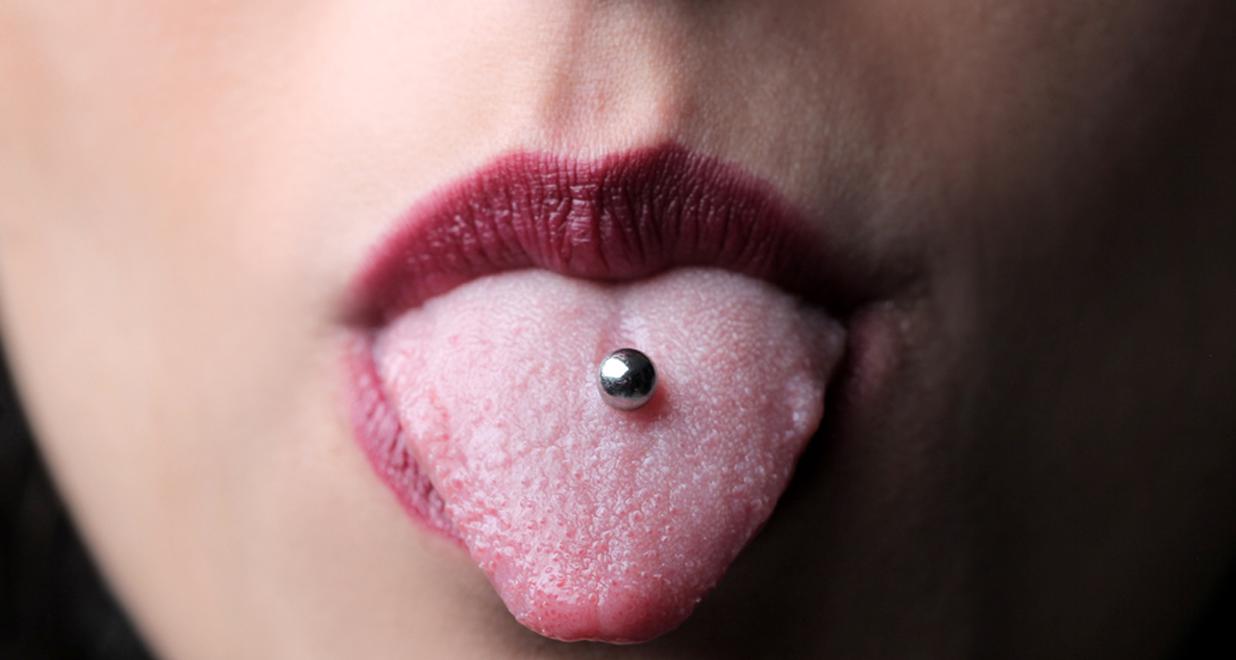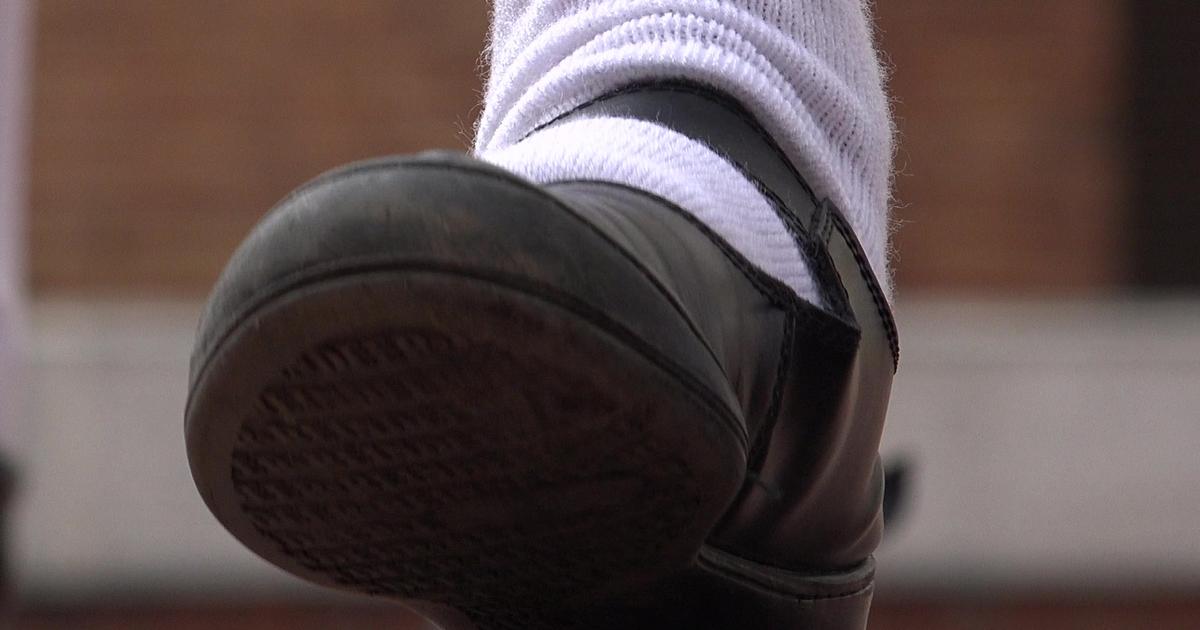Signs Of Tardive Dyskinesia
Tardive dyskinesia is a neurological disorder that makes it difficult for individuals to properly control their motions, making it quite difficult to perform daily tasks. Roughly 500,000 individuals in the United States alone have tardive dyskinesia. This disorder often occurs when a person has been taking antipsychotic medications for a while. Though antipsychotics are quite helpful for certain mental health conditions, their dopamine suppressing effect can cause some nervous system issues. Being able to notice whether or not they have tardive dyskinesia can help patients decide if they need to talk to a doctor about switching to other medications. Be on the lookout for these major symptoms of tardive dyskinesia.
Stick Out Tongue Without Trying

The motions associated with tardive dyskinesia, including sticking out the tongue without trying, are involuntary. Some patients may not even notice it is occurring, and it can happen even when they are actively trying to stop it from happening. There is a huge range of tongue motions individuals encounter. Individuals who stick out their tongue without trying may just poke the tip of their tongue out of their mouth, or they may stretch out their tongue altogether. Sometimes the tongue remains relatively stable once it is stuck out, or this symptom may cause them to roll up their tongue, wag it from side to side, or wiggle it around the mouth. This symptom is not typically dangerous or inconvenient, but it can cause a lot of self-confidence issues for patients. Many worry others think they may look odd or unusual when they are displaying this symptom.
Unveil the next symptom of tardive dyskinesia now.
Sway From Side To Side

Not all patients with tardive dyskinesia only deal with facial issues. Though rare, it is possible for this movement disorder to affect the brain's ability to control other parts of the body. Since tardive dyskinesia tends to cause small, repeated motions, this can manifest as an uncontrollable swaying motion. Some may sway from front to back, but a sway from side to side is far more common. Swaying may manifest itself regardless of whether a patient is sitting or standing. Since it involves the entire body, it can be a very exhausting symptom. Swaying tends to come and go. This sort of symptom may occur randomly and last for several minutes, but it typically is not a nonstop issue. Some patients find when they lay down, the swaying is less likely to occur, so they can get some relief by being in a bed.
Get to know more ways to spot tardive dyskinesia now.
Blink Eyes Fast

Unlike typical blinks so fast they are barely noticeable, the blinking associated with tardive dyskinesia may result in more pronounced blinking that noticeably diminishes vision for a few seconds. Patients who have tardive dyskinesia may find they begin blinking their eyes more and more often. For some patients, episodes of blinking may be brief periods of five to ten minutes where the eyelids flicker rapidly, but others may find their eye blinking symptom lasts far longer. Some individuals with tardive dyskinesia report they blink their eyes fast even when they're trying to keep their eyes shut or open. This symptom can end up making it quite hard to sleep, drive, or focus on a task. It tends to worsen when tired or stressed, so individuals who are upset may notice they are blinking more than usual.
Continue reading to reveal more symptoms of tardive dyskinesia now.
Smack Lips Or Puff Cheeks

Tardive dyskinesia frequently affects the muscles around the mouth, so some patients experience symptoms like lip and cheek motions. Two of the most common movements tardive dyskinesia causes are lip smacking and cheek puffing. When a patient smacks their lips, it may be a small motion like gently opening and closing the mouth, or it can be a pronounced movement with a lot of noises and moisture. Likewise, there is a whole spectrum of cheek puffing individuals may suffer from. They may slightly push out one cheek or the other, or it is fairly common for them to puff up both cheeks. Tardive dyskinesia patients who smack their lips or puff their cheeks report it tends to be fairly frequent. Some find their jaws, cheeks, or lips begin to feel sore due to the excessive amount of movement. This symptom can sometimes happen even when individuals are trying to eat, so it can make getting nourishment or socializing over food a little tricky.
Uncover the next sign of tardive dyskinesia now.
Grunting Noises

Tardive dyskinesia can cause issues with an individual's ability to control their breathing and mouth muscles, which can combine to result in involuntary sounds. These tend to sound like the patient is making grunting noises. They may be quiet noises similar to someone clearing their throat or humming, but sometimes this tardive dyskinesia can result in sudden and extremely loud sounds. Some patients with tardive dyskinesia report they find it difficult to be in quiet spaces like an office, library, or musical performance due to the sudden and uncontrollable grunting. When the grunting is occurring, it may get in the way of their ability to eat or breathe normally. This can make it a particularly distressing symptom, but fortunately, the involuntary urge to make grunting noises is not quite as common as other forms of tardive dyskinesia.
Uncover more indicators of tardive dyskinesia now.
Wiggling Fingers

Wiggling fingers are a symptom that occurs when there's dyskinesia of the limbs. Dyskinesia of the limbs affects the toes, fingers, legs, and arms. Patients might feel their fingers wiggle without their control over the movement. The movements might be slow or fast. If an individual has a job that requires typing or frequent use of their hands, they may find the finger wiggling impedes their ability to complete normal work tasks. It may also be difficult to do day-to-day activities like getting dressed, making food, and brushing teeth. If individuals have uncontrolled movements in their body, especially after starting or increasing a medication dose, they should talk to a doctor right away.
Read more about the warning signs of tardive dyskinesia now.
Tapping Feet

Another common symptom of dyskinesia of the limbs is tapping feet. When affected individuals are sitting with their feet flat on the ground, they may feel them tap uncontrollably. Patients might also sway from side to side as they're standing or walking. It may be difficult to walk and exercise because of the uncontrolled movements in their feet and legs. Even if affected individuals become aware of the foot tapping, they typically won't be able to stop or control it. Foot tapping and leg movements that impede one's gait should be reported to a doctor. Patients might need to lower their medication dose or switch to another medication.
Continue reading to reveal more symptoms of tardive dyskinesia now.
Difficulty Speaking

Dyskinesia can lead to difficulty speaking. One of the most common types of tardive dyskinesia is orofacial dyskinesia, which causes uncontrolled movements in the affected individual's facial muscles. The most commonly affected muscles are the tongue, jaw, and lips. When individuals are experiencing uncontrolled movements of these muscles, it's difficult for them to form clear speech. If their tongue is sticking out, they can't use it to form sounds. If their lips are puckering or smacking together repeatedly, they can't shape words properly. Speech may be interrupted, slurred, or difficult for others to understand. Patients might also chew on nothing and make involuntary grunting noises.
Discover another warning sign of tardive dyskinesia now.
Trouble Breathing

Orofacial dyskinesia symptoms can lead to trouble breathing. Depending on the level of impairment and obstruction, this can be potentially dangerous. If an individual's breathing is completely obstructed or feels like it may become completely obstructed, they should seek emergency medical attention. The position of the tongue might lead to issues with breathing. If the tongue is out and obstructing air flow into the mouth, or the tongue has fallen toward the back of the throat and obstructed the airway there, patients may struggle to breathe. Individuals might also struggle to breathe if their lips are puckered or closed, particularly if they can't breathe through their noses because of nasal congestion or a deviated septum.
Read more about the major signs of tardive dyskinesia now.
Disfigured Facial Features

With severe cases of tardive dyskinesia, there can be neurological impairments that lead to disfigured facial features. The disfigurement may be caused by involuntary movements twisting the face out of shape or damaging the muscles. It may also be caused by problems in the brain leading to a difference in how the facial muscles function. Facial disfigurement is a rare complication that typically occurs only in severe cases. Studies show about sixty to seventy percent of tardive dyskinesia cases are mild, while only around three percent cause extremely severe symptoms. If patients are experiencing uncontrolled movements or neurological symptoms causing visible disfigurement, they should talk to their doctor and may need to seek emergency medical attention.
